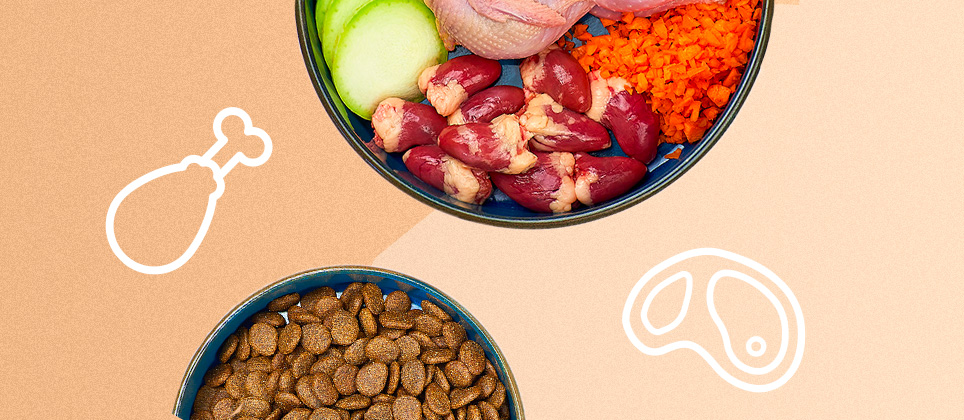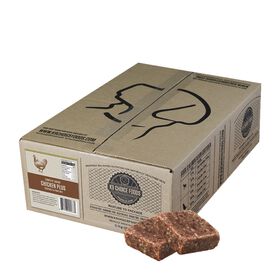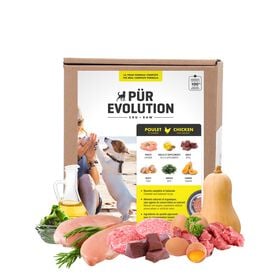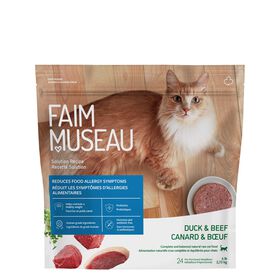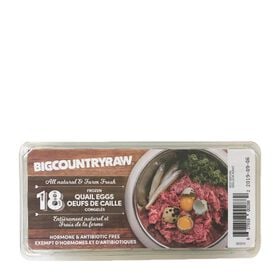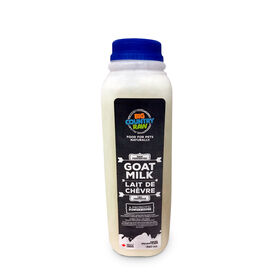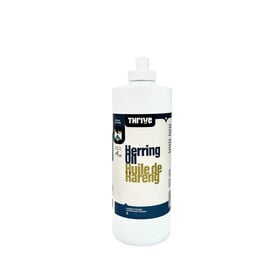Are you considering feeding your pet raw food, but don't know where to start? There are a few precautions and basic rules to follow to ensure a smooth transition.
This dietary change must be made gradually, and you must also develop hygiene habits that will ensure your family's health. Here's some guidelines to help you switch your pet's current diet to raw food.
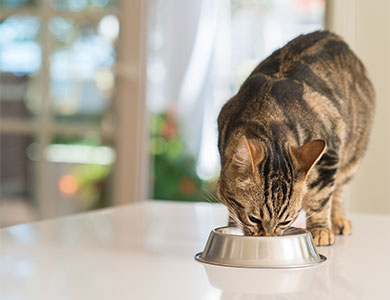
Ease the first few days of the transition
You can add a little warm water to the raw food to enhance the flavors, but this is not mandatory.
Sensitive stomachs - adult animals only
Choose a low-fat formula
In case of digestive sensitivity or as an extra precaution, it's best to start with a low-fat formula. Certain proteins such as chicken, turkey or duck can sometimes be a little leaner and easier to digest, but be sure to check the % fat on the guaranteed analysis.
Split meals
To help the stomach digest the new food, you can also divide the daily portion into several smaller meals (3 to 5).
Limit the number of different ingredients
If your pet has a history of food intolerance, it's preferable to opt for a formula with as few ingredients as possible, in order to identify what they are able to digest. Once the transition has been successfully completed, you can introduce new ingredients.
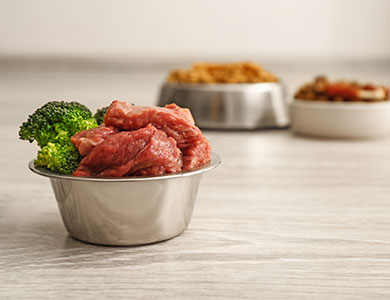
Switching to a 100% raw food diet
Dogs
To increase your chances of success during the transition, we recommend a gradual approach, i.e. gradually replacing the old food with the new one. The transition time allows the digestive system to adapt to the changes in food composition and to the new ingredients. The transition time is typically between 7 and 10 days, but can vary from animal to animal. It is possible to make a drastic transition, but this significantly increases the risk of digestive problems (diarrhea, constipation, vomiting), especially when the two diets have very different compositions (e.g. lipid intake, fiber intake).
Cats
With cats, the transition can sometimes be more difficult if they were not exposed to this type of food early in their development. To increase your chances of success, we recommend choosing a canned food that your cat particularly enjoys, and gradually mixing it with the new (raw) food. It is also possible to add lyophilized food pieces to increase the palatability of the meal.
Puppies & kittens
Simply make sure you choose a food that meets all the nutritional requirements needed to support the growth of the animal type concerned (puppy/kitten food or food for all life stages).
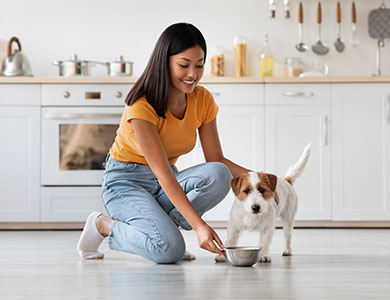
Opt for a diversified diet
If you plan to feed your pet a combination of raw food and dry or wet food, it's possible to do so in the same meal or in separate meals. Most animals will tolerate a mixture of the two diets very well.
Finally, when opting for a raw food for your pet, consider their age, activity level and environment and adapt their diet accordingly. Carefully read the daily recommended rations in relations to your pet’s actual weights and review its diet’s ratios regularly. Moreover, don’t hesitate to ask one of our in-store specialists for further advice.
Following these tips and rules will greatly increase your pet’s chances of successfully switching to raw food!
